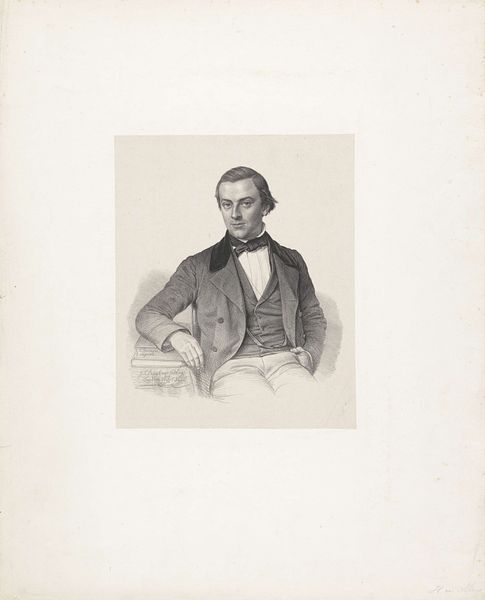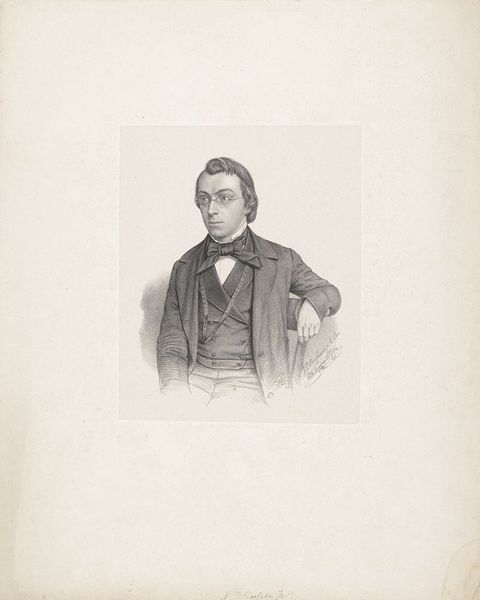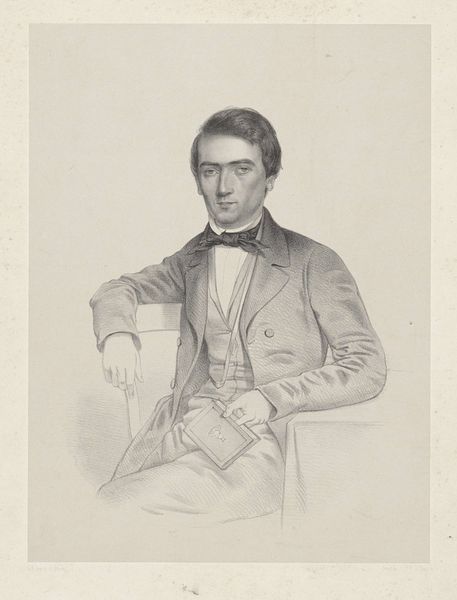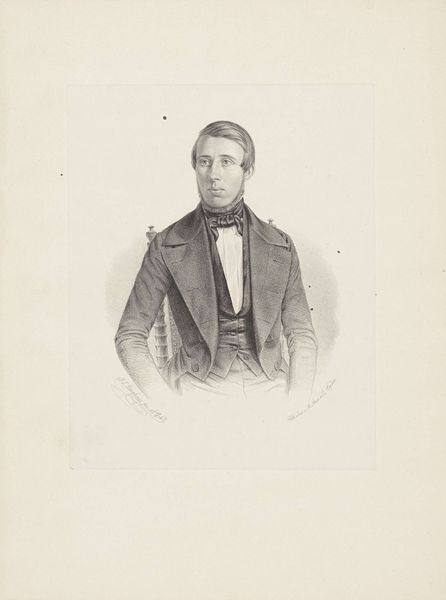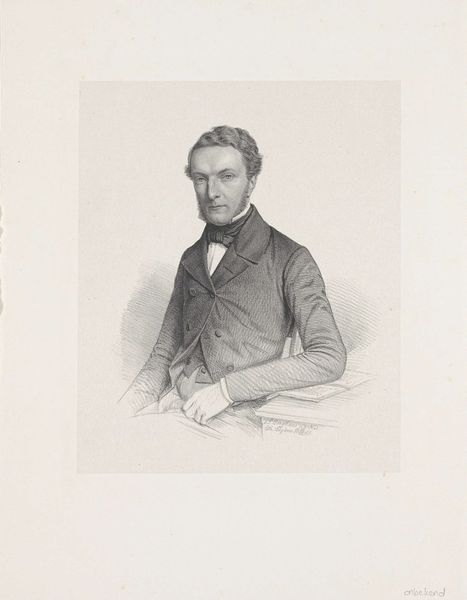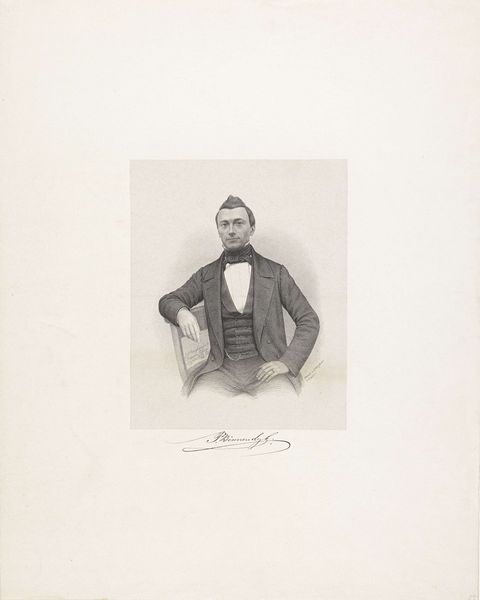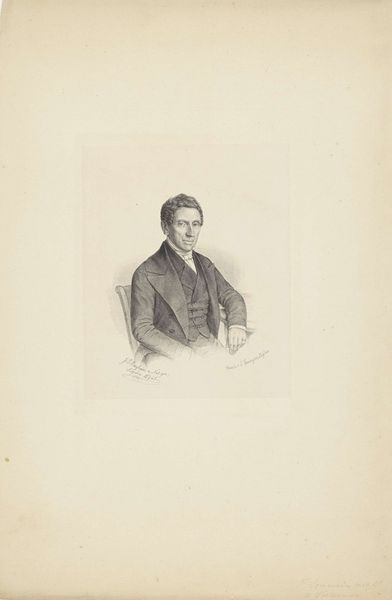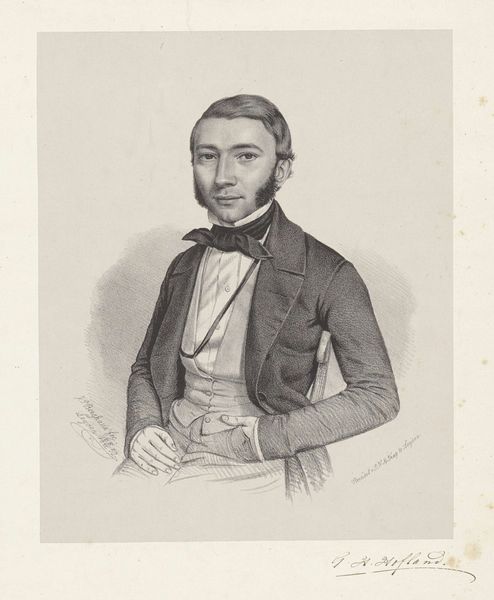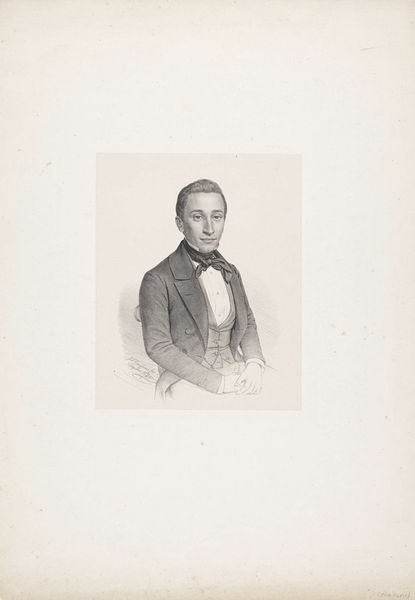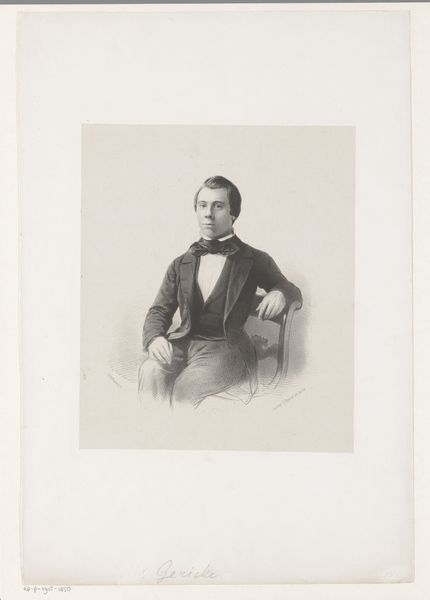
drawing, pencil, graphite
#
portrait
#
drawing
#
pencil drawing
#
pencil
#
graphite
#
academic-art
#
realism
Dimensions: height 411 mm, width 320 mm
Copyright: Rijks Museum: Open Domain
Curator: Here we have a fascinating pencil drawing from the Rijksmuseum collection entitled "Portret van een onbekende man" - Portrait of an Unknown Man. It is possibly from around 1856-1857 and attributed to Johann Peter Berghaus. What strikes you first about it? Editor: The density of graphite, the sheer labor evident in rendering those subtle gradations of tone. It speaks of someone investing considerable time, maybe commissioned for pay. Curator: Precisely. Note how Berghaus meticulously employs hatching and cross-hatching to model the forms and capture the light. There’s a clear academic leaning in its adherence to realistic representation and its almost photographic attention to detail. The figure is clearly well postured. Editor: Though “academic,” there is nothing stale about this man. His clothing speaks volumes, so formally dressed, holding a book—he’s performing respectability. Also the tools! Consider what pencil drawings like these would have meant. It wasn't simply the materials, like graphite from Cumberland. Rather the economics involved in crafting those implements that granted such definition to line and tone. Curator: You highlight an important aspect: the status imbued by access to materials and leisure. Consider the way Berghaus defines the planes of the face, drawing our eyes to his composed, confident expression. The meticulous shading and layering of graphite to produce these textures suggests a conscious articulation of status. The face as signifier of class. Editor: That sense of control certainly emanates. Thinking about labor, though, there’s also a hidden vulnerability revealed through process itself: a certain stiffness almost inherent to the drawing tools, maybe even to the sitter. What strikes me, overall, is the quiet dignity amidst clear indicators of social positioning. Curator: An apt summary, really. The power of realism employed here becomes not just representational, but analytical. Berghaus' study prompts us to observe portraiture not just as a capturing of likeness but rather as an encoding of social dynamics onto paper. Editor: I agree. The level of material dedication reflects an artistic labor but also reveals an archive of human experiences of the era. It's in these nuances that material analysis intersects beautifully with art’s inherent formalism.
Comments
No comments
Be the first to comment and join the conversation on the ultimate creative platform.
